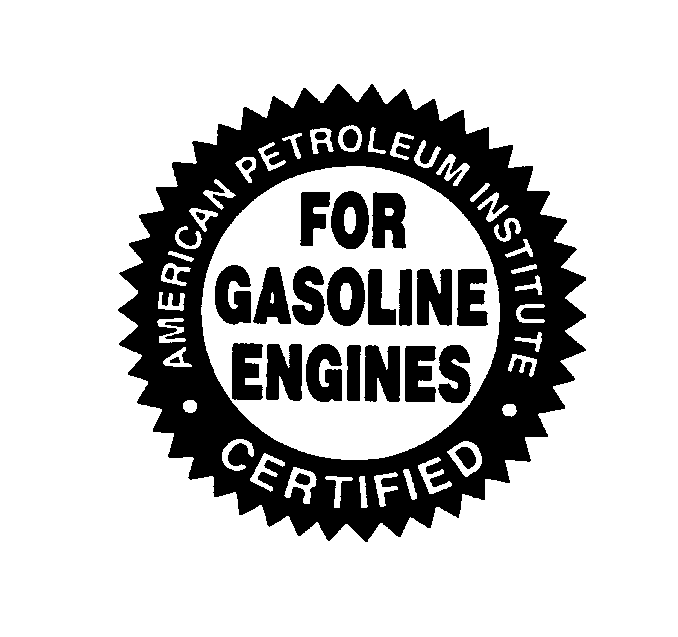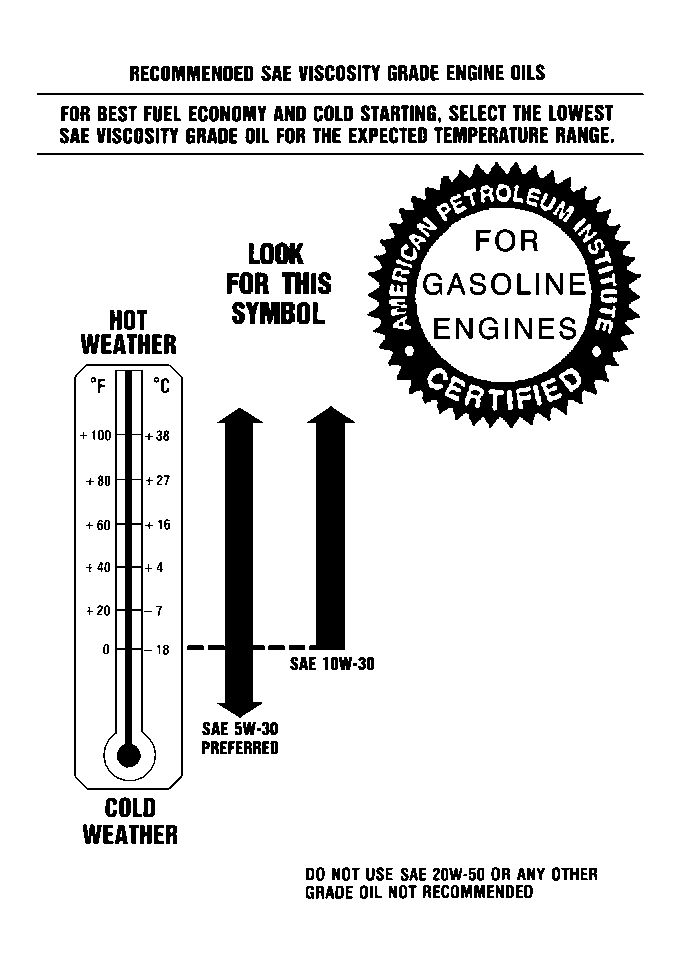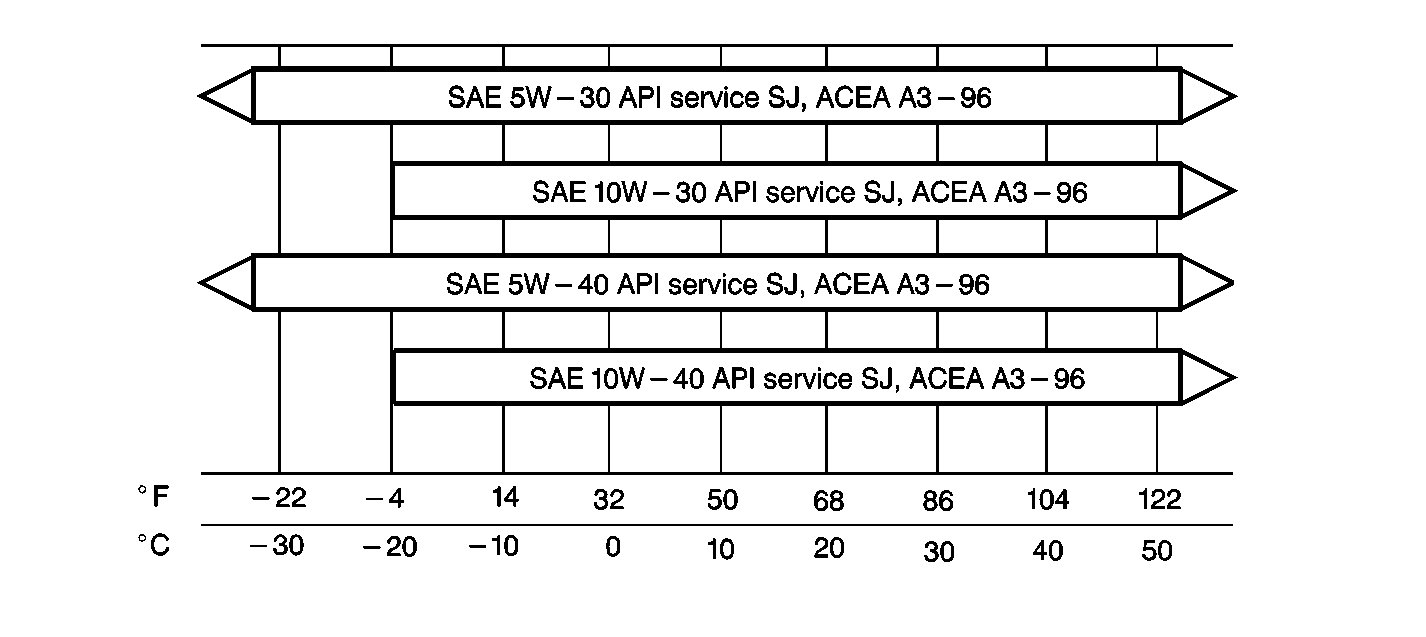For time and/or mileage intervals of scheduled maintenance items, refer to Maintenance Schedule .
The following text and illustrations describe the details of the required scheduled maintenance services.
For information on the proper fluids and lubricants to use, refer to Fluid and Lubricant Recommendations .
Engine Oil and Oil Filter Change
For the engine oil and oil filter changing procedure, refer to Engine Oil and Oil Filter Change .
Engine Oil Quality

Notice: Oil that does not have the GM4718M specification designation can cause engine damage not covered by the warranty.
Important: DO NOT use engine oil additives in Corvette engines.
When adding to, or changing the engine oil, use ONLY oils of the proper quality. The Corvette engine requires a special oil meeting the GM Specification 4718M. The oils meeting this GM Specification may be identified as synthetic, and should also be identified with the American Petroleum Institute (API) Certified For Gasoline Engines STARBURST symbol. However, NOT ALL Synthetic oils with the STARBURST symbol will meet this GM Specification. Look for and use ONLY the oils that meet GM Specification 4718M.
(All Corvette engines are filled at the factory with Mobil 1® synthetic oil, which meets all requirements of GM Specification 4718M.)
Engine Oil Viscosity

Notice: Using engine oils of any viscosity other than those viscosities recommended could result in engine damage.
Engine oil viscosity (thickness) has an effect on fuel economy and cold-weather operation (starting and oil flow). Lower viscosity engine oils can provide better fuel economy and cold-weather performance.
When you are choosing an engine oil viscosity, consider the range of temperatures the vehicle will be operated in before the next oil change. Then, select the recommended oil viscosity.
The recommended SAE engine oil viscosity is 5W-30, however, if temperatures are above -18°C (0°F) 10W-30 may be used.
Engine Oil Quality and Viscosity (Export)

In areas of the world other than North America, it may be difficult to find oils that display the API STARBURST symbol and that are labeled as meeting the GM4718M Specification.
If you cannot find API STARBURST displaying oils identified as meeting the GM4718M requirements, look for oils that meet the API Service SJ and ACEA A3-96 requirements.
The recommended SAE engine oil viscosity is 5W-30, however, additional engine oil viscosites meeting the API Service SJ and ACEA A3-96 requirements may be used in accordance with the temperature ranges shown.
Engine Oil Level Check
The engine oil level indicator (dipstick) is located on the RH side of the engine, next to the coolant surge tank.
- Park the vehicle on a flat, level surface.
- Run the engine for 3 minutes to warm the engine oil.
- Turn OFF the engine and allow the engine to cool for a minimum of 3 minutes.
- Pull out the engine oil level indicator from the tube and wipe the indicator clean with a paper towel or a clean, dry cloth.
- Insert the oil level indicator back into the tube and push down all the way.
- Remove the oil level indicator again and keep the tip of the indicator down.
- Check the engine oil level.
Important: The engine oil must be WARM to obtain an accurate oil level reading.
Accessory Drive Belt Inspection
Inspect the accessory drive belts for the following:
| • | Cracks |
| • | Fraying |
| • | Wear |
| • | Proper tension |
Replace as needed. (Belts can have many small cracks in individual ribs without affecting the performance.) Refer to Drive Belt Replacement in Engine Mechanical.
Cooling System Service
Notice: DO NOT use cooling system seal tabs, or similar compounds, unless otherwise instructed. The use of cooling system seal tabs, or similar compounds, may restrict coolant flow through the passages of the cooling system or the engine components. Restricted coolant flow may cause engine overheating and/or damage to the cooling system or the engine components/assembly.
Important: If silicate coolant is added to the cooling system, premature engine, heater core or radiator corrosion may result. In addition, the coolant will require change SOONER, at 30,000 miles (50 000 km) or 24 months.
Drain, flush and refill the system with a 50/50 mixture of clean water (preferably distilled) and ONLY GM Goodwrench® DEX-COOL® or Havoline® DEX-COOL® (silicate-free) coolant. Refer to Cooling System Draining and Filling in Engine Cooling.
Transmission Service
Manual Transmission
No fluid changing service required. For fluid level checking maintenance intervals, refer to Inspections and Other Services .
Automatic Transmission
Change both the fluid and the filter according to the maintenance schedule intervals. For maintenance shedule information, refer to Maintenance Schedule .
For the fluid and filter changing procedure, refer to Automatic Transmission Fluid and Filter Replacement in Automatic Transmission.
Spark Plug Replacement
Replace the spark plugs according to the maintenance schedule intervals with the correct type. For maintenance shedule information, refer to Maintenance Schedule .
For information on the correct type of spark plug, refer to Maintenance Items .
For the spark plug replacement procedure, Refer to Spark Plug in Engine Electrical.
Spark Plug Wire Inspection
Clean the spark plug wires and inspect for burns, cracks or other damage. Check the wire boot fit at the coils and at the spark plugs. Replace wires as needed. Refer to Spark Plug Wires Not Operating Properly in Engine Electrical.
Air Cleaner Filter Replacement
Replace the air cleaner filter according to the maintenance schedule intervals with the correct type. For maintenance shedule information, refer to Maintenance Schedule .
For information on the correct type of air cleaner filter, refer to Maintenance Items .
For the air cleaner filter replacement procedure, refer to Air Filter Element and Air Cleaner Assembly in Engine Controls.
Fuel Tanks, Cap and Lines Inspection
Inspect the following components for damage or leaks:
| • | The fuel tanks |
| • | The cap |
| • | The lines |
| • | The fuel rails |
| • | The injection assemblies |
Inspect the fuel cap gasket for an even filler neck imprint and any damage. Replace parts as needed. Periodic replacement of the fuel filter is not required. For fuel system diagnosis information, refer to Fuel System Diagnosis in Engine Controls.
